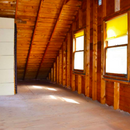Conditioned attic: Best insulation / ventilation (with standing-seam metal roof)?
Hey Everyone,
In a month, I’m planning to finish the attic of a small cape in Burlington, Vermont (Climate Zone 6) to add bedrooms and a bath through two shed dormers (house is only 24’x34′, thus we need the space of that level). We are planning to do closed cell spray foam for the ceiling and walls and to probably do ZIP sheathing with a new standing seam metal roof (heating system will be hydronic baseboard). The current ceiling rafterss are only 2″x6″ and the walls are only 2″x4″, so I assume that we should pad them out with something deeper, like 2x10s on the ceilling and 2″x6″s on the walls. After spending many hours reading these blogs and articles, I’m questioning our plan and wondering a few things:
1) Is this a good plan??!!!
VENTILATION:
Do I need air ventilation channels either below the metal roofing or between the sheathing and spray foam?
Would a whole house ventilation system help resolve any risk of moisture issues?
What type of underlayment should we use over the zip system?
Is there a minimum roof slope that we should hit?
Is closed cell foam the right choice? If so, how do we insulate the rafters?
Are there any other considerations that I’m not thinking of?
Thanks so much in advance!
Ali
GBA Detail Library
A collection of one thousand construction details organized by climate and house part










Replies
Ali,
Q. "Do I need air ventilation channels either below the metal roofing or between the sheathing and spray foam?"
A. Ventilation channels aren't necessary with this type of roof, but they may be desirable, especially if you decide to use less insulation than minimum code requirements (R-49). The reason: You want to reduce the chance of ice dams. In climates with lots of snow, ventilation channels reduce the chance of ice dams.
You can either create ventilation channels above the existing roof sheathing, or below the existing roof sheathing.
Q. "Would a whole house ventilation system help resolve any risk of moisture issues?"
A. Perhaps. More importantly, a whole-house ventilation system improves indoor air quality, and keeps occupant healthy.
Q. "What type of underlayment should we use over the zip system?"
A. Asphalt felt is a time-honored roofing underlayment that meets code requirements. If the roof will be exposed to the weather for many weeks before the roofing contractors shows up, you might want to consider one of the new synthetic roofing underlayments. You should be aware, however, that the manufacturers of some brands of roofing underlayment forbid the use of their products on unvented roofs.
Q. "Is there a minimum roof slope that we should hit?"
A. The photo shows a steep roof, so you should be fine. If your house has any low-slope roofs, you should talk to your roofer. Minimum roof slope for a standing-seam roofing varies, depending on the brand of roofing you choose.
Q. "Is closed cell foam the right choice? If so, how do we insulate the rafters?"
A. Closed-cell spray foam is better for this type of job than open-cell spray foam. You can either ask your spray foam contractor to spray enough foam to cover the ends of the rafters (this is easier if you strap the roof on the inside with 2x4s), or you can install Bonfiglioli strips. For more on Bonfiglioli strips, see "Breaking the Thermal Bridge."
Q. "Are there any other considerations that I’m not thinking of?"
A. Probably.